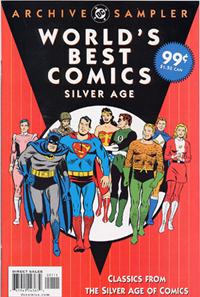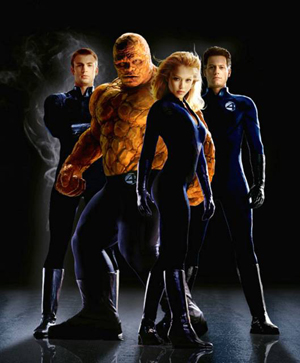Comics /
Cult Favorite
Kids and Comic Books, Part 2
By Philip Schweier
May 10, 2005 - 12:39
Two years ago, I wrote an article on why kids today aren’t reading comics as much as publishers might like. Last summer, Pulitzer-prize winning author Michael Chabon raised the issue in his keynote address at the Eisner Awards in San Diego.
Chabon refuted the argument that there is an increasing demand for children’s attention, now moreso than in previous generations. His interpretation is the field remains the same, only the players have changed. He raised a valid point in saying that children did not abandon comics, comics abandoned children.
In the 1980s, with the growing direct sales market, more and more comics were aimed at increasingly older readers, a natural evolutionary process. In order for the medium to be regarded as legitimate entertainment, comics needed to grow and appeal to older, more sophisticated audiences.
The current effort to resurrect the pre-teen market is well-intentioned, based on the belief that kids who read comics now will read them as adults. However, there are a number of adults who have once read comics, but in time turned to other – and equally valid – pursuits.
The recent fourth annual Free Comic Book Day featured over 30 publishers participating, with a broad range of genres from which to choose. Material was made available to the widest possible audience, from small children to older readers.
Ultimately, young and old alike will embrace the interest that captures their imagination and entertains them on a sustained level. The pre-teen audience will not build readership if the stories pander to childish tastes. Such books have been referred to as “all-ages,” but this is a misnomer. I know of no comic fan over the age of 15 who reads them
Some publishers may argue it’s a hard nut to crack, but to them, I suggest that they just aren’t trying hard enough. Not that they really need to. There is a tremendous resource for pre-teen material, already written and drawn and ready for production.
Marvel and DC generated thousands of titles for younger audiences for decades. Reprinting such stories is one option, perhaps in digest or manga-sized editions aimed at supermarket checkouts. Similar strategy seems to work for Archie.
One might believe that this diminishes the value of DC’s Archive Editions and Marvel’s Masterworks series. I suggest that companies save more noteworthy stories for such high-end publishing programs, and perhaps use other material – backup stories or fill-ins – for the digest format.
Perhaps by scaling back productions techniques, such as paper quality or color printing processes, publishers may be able to reduce the costs of some titles for younger readers. While this approach might make the books less collectible, the focus I’m suggesting is entertainment value, rather than investment potential.
Independent creators are seemingly more interested in creating the type of material they would have read as teenagers, ignoring their younger years altogether. Perhaps they are convinced of the lack of viability for such material, but it has long been the approach of animated cartoon makers to write for very broad-based audiences.
Since the Looney Tunes of the 1940s, through Bullwinkle, to today’s Spongebob Squarepants, there has been remarkable amount of wit and entertainment soaring over the heads of children, allowing adults to enjoy the so-called “kiddie fare” as much as younger audiences.
To wonder how this feat can be translated to comic books, one need only look to more recent comic-based cartoons. Programs such as Justice League and X-Men: Evolution have cultivated audiences from across the age spectrum. Successful multi-media tie-ins open the door to possible parental participation (say that 5 times fast). According to comicscontinuum.com, Spider-Man 2 took in over $335.8 million in its first month of release. Such exposure to mainstream movie audiences generates interest beyond the comics community.
With additional movie franchises such as Batman Begins and Fantastic Four, we can be assured that moviegoers of all ages who miss the comic book boat in 2004 will have ample opportunity in coming years to enjoy the fandom we love so much.
But let’s not fool ourselves into believing that tapping the pre-teen audience will ease the woes of the entire industry. Younger readers represent only one segment of the market. Ultimately, we must produce a product that will have broad-based appeal, allowing audiences of ALL ages to participate in the fandom we enjoy so much.
Praise and adulation? Scorn and ridicule? Email me at philip@comicbookbin.com
Last Updated: August 31, 2023 - 08:12


